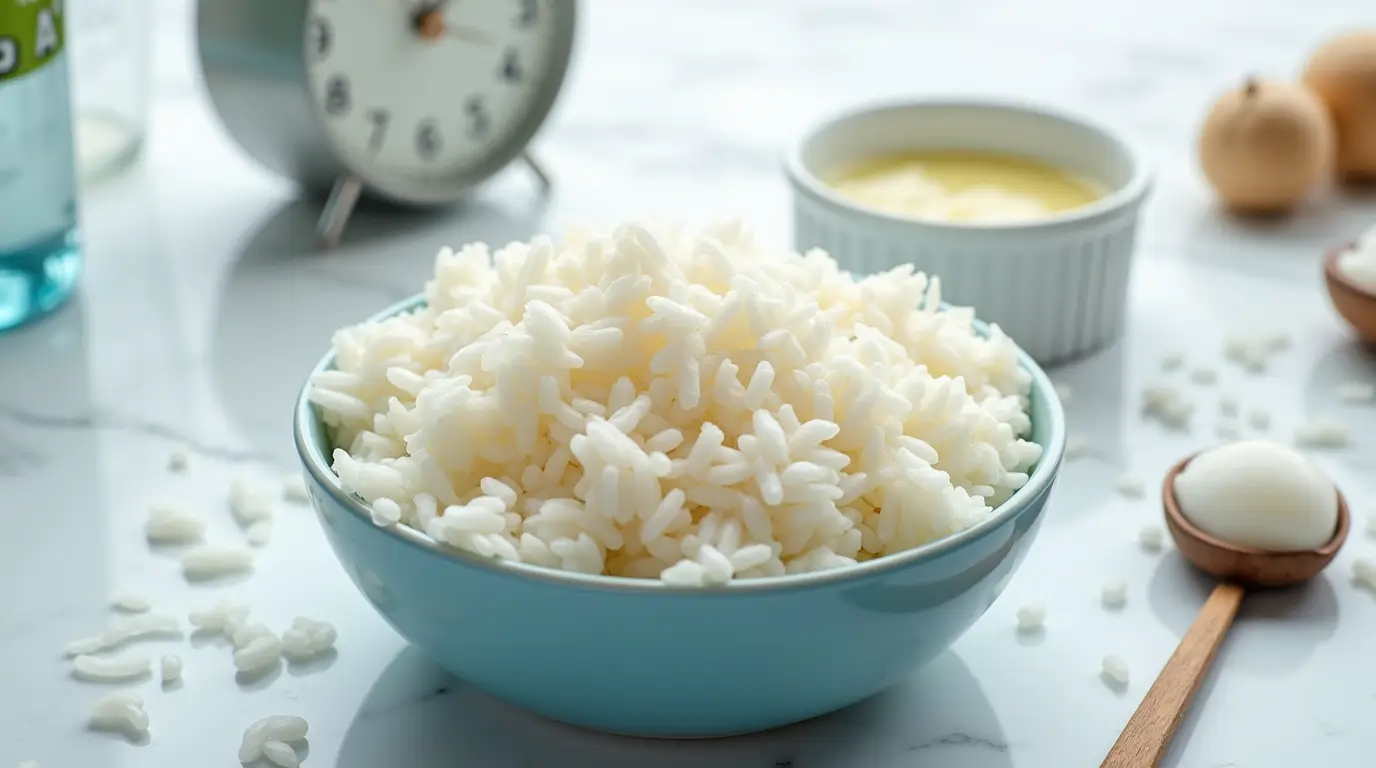I love a good, comforting meal, especially when it’s creamy cheese and tender pasta. But what if you could make mac and cheese even better? Cottage cheese adds a nutritional boost to this classic dish.
These high-protein mac and cheese recipes with cottage cheese are perfect for health-conscious eaters. They offer a creamy, cheesy taste with a nutritional kick. You’ll love every bite.
Key Takeaways
- Discover the benefits of using cottage cheese in mac and cheese recipes
- Learn how to boost the protein content of your favorite comfort food
- Find easy-to-follow recipes for delicious and nutritious mac and cheese dishes
- Understand the importance of proper texture and flavor balance when adding cottage cheese
- Explore creative ways to customize your mac and cheese with protein-rich ingredients
Why Cottage Cheese Makes the Perfect Mac and Cheese Addition
Cottage cheese is a secret weapon for the ultimate mac and cheese. It’s packed with nutrients and boosts both texture and flavor. This makes it a must-have for your dish.
Nutritional Benefits of Cottage Cheese
Cottage cheese is a protein powerhouse, offering 24 grams per cup. It’s also low in fat and carbs, making it a healthier choice than traditional cheese.
Texture and Flavor Enhancement
The creamy, tangy flavor of cottage cheese complements mac and cheese perfectly. It adds a creamy texture and a tangy taste that elevates the dish. The soft, curdy texture also makes it smooth and indulgent.
Cost-Effective Protein Source
Cottage cheese is a budget-friendly way to add protein to your mac and cheese. It’s more affordable than other dairy options like shredded cheese or heavy cream. This makes it a great choice for boosting your dish’s protein without spending a lot.
Adding cottage cheese to your mac and cheese is a simple way to improve its nutritional value, texture, and flavor. Try it out and see the difference for yourself!

Essential Ingredients for Protein-Rich Mac and Cheese
Creating a protein-packed mac and cheese starts with key ingredients. Cottage cheese is a must. It adds creaminess and a lot of protein to your dish.
There are more ways to make your mac and cheese even better. Let’s look at the ingredients that make it a filling, protein-rich meal:
- Lean Proteins: Add diced chicken, turkey, or ground beef or sausage for more protein.
- Legumes: Beans, lentils, or chickpeas add plant-based protein.
- Nuts and Seeds: Chopped almonds, walnuts, or pumpkin seeds add crunch and protein.
- Whole Grains: Choose whole-wheat or multigrain pasta for more fiber and carbs.
- Vegetables: Tomatoes, spinach, broccoli, or bell peppers add nutrients and fiber.
By picking these protein-rich ingredients, you can make recipes with cottage cheese that are tasty, healthy, and filling.

“To make a protein-rich mac and cheese, it’s essential to use a perfect mix of premium ingredients.”
Remember, you can customize your mac and cheese with cottage cheese and other protein boosters. Be creative and find the perfect mix for you.
Classic Protein Mac and Cheese Recipe
Take your mac and cheese to the next level with cottage cheese. It enhances the creaminess of the dish while boosting its nutritional value. Here’s how to make a protein-rich mac and cheese that’s both tasty and satisfying.
Base Ingredients and Measurements
- 8 oz elbow macaroni
- 1 cup low-fat cottage cheese
- 1 cup shredded cheddar cheese
- 1/2 cup milk
- 2 tbsp unsalted butter
- 1 tsp salt
- 1/4 tsp black pepper
Step-by-Step Cooking Instructions
- Preheat your oven to 375°F (190°C).
- Cook the elbow macaroni until it’s al dente. Drain and set aside.
- Put the butter in a medium pan and dissolve it over medium warm. Add the milk and whisk until smooth and heated through.
- Remove the saucepan from heat and stir in the cottage cheese, cheddar cheese, salt, and black pepper until well combined.
- Add the cooked macaroni to the cheese mixture and stir until evenly coated.
- Transfer the mac and cheese to a baking dish and smooth the top with a spoon.
- Bake for 20-25 minutes, or until the top is lightly golden and the cheese is bubbly.
- Remove the mac and cheese from the oven and let it cool for 5 minutes before serving.
Pro Tips for Creamy Results
For creamier results, add a splash of milk or cream to the cheese mixture. Don’t overcook the cottage cheese to avoid a grainy texture. Also, don’t overmix the mac and cheese in the baking dish to prevent it from becoming dense.
Enjoy this protein-rich mac and cheese with a side salad or your favorite vegetables for a complete and satisfying meal.
Healthy Cooking Substitutions and Alternatives
Creating a nutritious mac and cheese with cottage cheese is easy. You can make a few simple changes to boost its health benefits. This way, you keep the dish’s creamy flavor and texture.
Try using whole-grain or chickpea pasta instead of white pasta. This adds more fiber and a nutty taste. You can also use low-fat or non-fat Greek yogurt for a creamy base. This reduces fat and calories.
Adding plant-based proteins like lentils, edamame, or tofu increases the dish’s protein. These ingredients add texture and nutrients without changing the dish’s taste.
For a healthier cheese option, choose reduced-fat or low-sodium varieties. Mixing cottage cheese with shredded cheese gives a creamy base and classic flavor.
These healthy swaps turn your mac and cheese into a nutritious meal. It’s packed with protein and tastes great. Enjoy the comforting flavors while nourishing your body.
Creative Mix-ins to Boost Protein Content
Creating a protein-packed mac and cheese is fun and easy. You can add meat, poultry, or veggies to make it even better. Mixing these with cottage cheese makes for a nutritious meal.
Meat and Poultry Options
For a meaty mac and cheese, try ground beef, shredded chicken, or turkey sausage. These add protein, texture, and flavor.
Vegetarian Protein Add-ins
- Cubed baked tofu or tempeh for a plant-based protein punch
- Sautéed lentils or chickpeas for a fiber-rich boost
- Add crumbled feta or goat cheese to introduce a creamy and tangy flavor
Complementary Vegetables
Add veggies like spinach, broccoli, or onions to your mac and cheese. They make the dish taste better and look great.
| Protein Mix-in | Serving Size | Protein (g) |
|---|---|---|
| Ground Beef | 1/2 cup | 21g |
| Shredded Chicken | 1/2 cup | 26g |
| Baked Tofu | 1/2 cup | 10g |
| Lentils | 1/2 cup | 9g |
| Feta Cheese | 1/4 cup | 6g |
Adding protein-rich mix-ins and veggies to your mac and cheese makes it tasty and healthy. It’s perfect for a satisfying meal.
Meal Prep and Storage Guidelines
Proper meal prep and storage are key for cottage cheese mac and cheese. They help keep the dish’s texture and flavor just right. Whether you’re making a big batch or just one serving, these tips will help you enjoy your cottage cheese mac and cheese to the fullest.
Meal Prepping for the Week
Make a big batch of cottage cheese mac and cheese on the weekend for easy meal prep. Here are some tips to keep it fresh and tasty all week:
- Portion the mac and cheese into individual serving containers or meal prep containers.
- Let the mac and cheese cool completely before refrigerating or freezing.
- Refrigerate servings in airtight containers for up to 4 days.
- Freeze individual portions in freezer-safe containers or bags for up to 3 months.
Reheating and Texture Maintenance
When reheating your cottage cheese mac and cheese, follow these tips to keep it creamy:
- Refrigerated mac and cheese: Reheat in the microwave in 30-second intervals, stirring between each, until heated through.
- Frozen mac and cheese: Thaw in the refrigerator overnight, then reheat on the stovetop or in the oven until hot and creamy.
- Add a splash of milk or broth when reheating to help the cheese sauce re-emulsify and prevent dryness.
By following these meal prep and storage guidelines, you can enjoy the delicious benefits of cottage cheese mac and cheese all week long!
Common Mistakes to Avoid When Adding Cottage Cheese
Cottage cheese can make your homemade mac and cheese better and healthier. However, it’s important to steer clear of common errors. Knowing how to control temperature and manage texture is key. This way, your mac and cheese will be creamy, tasty, and just right.
Temperature Control Tips
Keeping the right temperature is very important when adding cottage cheese. If it gets too hot, it can curdle or separate. To avoid this, do the following:
- Gently fold the cottage cheese into the hot pasta and sauce mixture, rather than stirring vigorously.
- Remove the pan from the heat source before adding the cottage cheese to prevent it from overheating.
- Allow the cottage cheese to slowly incorporate and warm through, rather than bringing the entire dish back to a boil.
Texture Management
Managing the texture of cottage cheese is also crucial. Big or chunky curds can make your mac and cheese feel grainy. To get a smooth, creamy texture:
- Use small-curd cottage cheese, which will blend more seamlessly into the dish.
- Take the time to gently mash or puree the cottage cheese before folding it in, breaking down any larger curds.
- Consider blending a portion of the cottage cheese with a bit of milk or cream to create a more uniform texture.
By following these tips on temperature and texture, you can enjoy cottage cheese in your mac and cheese. It will add nutrition and flavor without any bad effects.
Dietary Variations and Special Considerations
Cottage cheese makes protein mac and cheese versatile for many diets. It works for gluten-free, lactose-free, and vegan lifestyles. This way, you can enjoy a high-protein comfort food without losing flavor or nutrition.
Gluten-Free Protein Mac and Cheese
For those with gluten issues, making a gluten-free version of protein mac and cheese is easy. Use gluten-free pasta and replace wheat flour with rice flour or gluten-free all-purpose flour. Cottage cheese keeps it creamy without gluten.
Lactose-Free Protein Mac and Cheese
Lactose intolerance doesn’t mean you can’t enjoy what to eat with cottage cheese in mac and cheese. Try lactose-free cottage cheese or use plant-based ‘cheese’ like cashew or almond-based. This way, you get a dairy-free, protein-rich dish.
Vegan Protein Mac and Cheese
Vegans can also enjoy protein mac and cheese. Use plant-based milk and cheese alternatives. Blend tofu or cashews with seasonings for a creamy texture. Or, try nut-based ‘cheese’ sauces for a similar taste.
With a bit of creativity and the right swaps, cottage cheese can be part of your mac and cheese. It’s great for any diet. Try different ingredients and methods to find your favorite protein mac and cheese recipe.
Conclusion
Adding cottage cheese to your mac and cheese recipes is a great idea. It makes the dish more nutritious and fills you up. Cottage cheese adds a creamy texture and more protein to this beloved comfort food.
With cottage cheese, you can make many tasty and protein-rich mac and cheese dishes. You can stick to the classic recipe or try new mix-ins. The mix of cottage cheese recipes and mac and cheese is a hit for both taste and health.
So, when you want a cozy and fulfilling meal, try using cottage cheese in your mac and cheese. It brings great texture, flavor, and more protein. Enjoy every bite, knowing you’re getting both indulgence and nutrition.
FAQ
What advantages does using cottage cheese in mac and cheese offer?
Cottage cheese adds a lot to mac and cheese. It boosts the protein, making it more nutritious. It also makes the dish creamy and smooth, perfect with pasta.
What are the essential ingredients for a protein-rich mac and cheese recipe?
For a protein-rich mac and cheese, you need: high-protein pasta, low-fat cottage cheese, and shredded cheese. Add eggs and milk or Greek yogurt. You can also include chicken, turkey, or plant-based proteins like lentils or chickpeas.
How do I make a classic protein mac and cheese recipe?
To make a classic protein mac and cheese, start with 8 oz high-protein pasta. Add 1 cup low-fat cottage cheese and 1 cup shredded cheddar cheese. Use 2 eggs and 1 cup milk or Greek yogurt. Season with salt and pepper. Cook pasta, mix all ingredients, and bake at 375°F for 20-25 minutes.
What are some healthy substitutions and alternatives I can use in protein mac and cheese?
For a healthier mac and cheese, try whole-wheat or gluten-free pasta. Use low-fat cheese and unsweetened almond or cashew milk. Add pureed veggies like cauliflower or butternut squash for creaminess without extra calories.
What are some protein-rich mix-ins I can add to my mac and cheese?
To increase protein, add grilled or baked chicken, turkey, or plant-based proteins like lentils, chickpeas, or tofu. Include veggies like broccoli, spinach, or diced tomatoes for extra nutrition.
How should I store and reheat leftover protein mac and cheese?
Keep any leftover mac and cheese in an airtight container in the refrigerator for up to 4 days. Reheat with a splash of milk or water on the stovetop or in the microwave. Stir often to keep it creamy.
What are some common mistakes to avoid when adding cottage cheese to mac and cheese?
When adding cottage cheese, control the temperature and texture. Ensure the cottage cheese is room temperature before mixing. Stir gently to avoid breaking it down and losing creaminess.
How can I make protein mac and cheese for special dietary needs?
For gluten-free diets, use gluten-free pasta. For lactose-free or vegan options, replace cottage cheese and cheese with dairy-free alternatives. Try plant-based cheese or a cashew-based sauce. Use pureed tofu or beans for creaminess and protein.
perfect
5 stars







